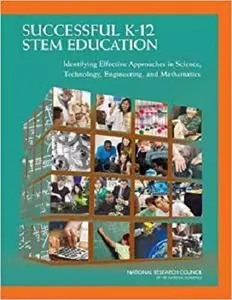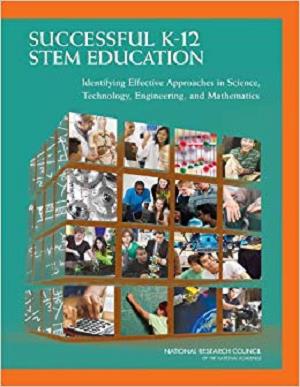Successful K-12 STEM Education: Identifying Effective Approaches in Science, Technology, Engineering, and Mathematics by National Research Council, Division of Behavioral and Social Sciences and Education, Board on Testing and Assessment
English | July 22, 2011 | ISBN: 0309212960 | 44 pages | PDF | 3.20 MB
English | July 22, 2011 | ISBN: 0309212960 | 44 pages | PDF | 3.20 MB
Science, technology, engineering, and mathematics (STEM) are cultural achievements that reflect our humanity, power our economy, and constitute fundamental aspects of our lives as citizens, consumers, parents, and members of the workforce. Providing all students with access to quality education in the STEM disciplines is important to our nation's competitiveness. However, it is challenging to identify the most successful schools and approaches in the STEM disciplines because success is defined in many ways and can occur in many different types of schools and settings. In addition, it is difficult to determine whether the success of a school's students is caused by actions the school takes or simply related to the population of students in the school.
Successful K-12 STEM Education defines a framework for understanding "success" in K-12 STEM education. The book focuses its analysis on the science and mathematics parts of STEM and outlines criteria for identifying effective STEM schools and programs. Because a school's success should be defined by and measured relative to its goals, the book identifies three important goals that share certain elements, including learning STEM content and practices, developing positive dispositions toward STEM, and preparing students to be lifelong learners. A successful STEM program would increase the number of students who ultimately pursue advanced degrees and careers in STEM fields, enhance the STEM-capable workforce, and boost STEM literacy for all students. It is also critical to broaden the participation of women and minorities in STEM fields.
Successful K-12 STEM Education examines the vast landscape of K-12 STEM education by considering different school models, highlighting research on effective STEM education practices, and identifying some conditions that promote and limit school- and student-level success in STEM. The book also looks at where further work is needed to develop appropriate data sources. The book will serve as a guide to policy makers; decision makers at the school and district levels; local, state, and federal government agencies; curriculum developers; educators; and parent and education advocacy groups. <hr/>Table of Contents
- Front Matter
- Introduction
- The Need to Improve STEM Learning
- Goals for U.S. STEM Education
- Three Types of Criteria to Identify Successful STEM Schools
- Summary of Criteria to Identify Successful K-12 STEM Schools
- What Schools and Districts Can Do to Support Effective K-12 STEM Education
- What State and National Policy Makers Can Do to Support Effective K-12 STEM Education
- Appendix: Background Papers Prepared for May 2011 Workshop
- Notes
- Acknowledgments
- Photo Credits



